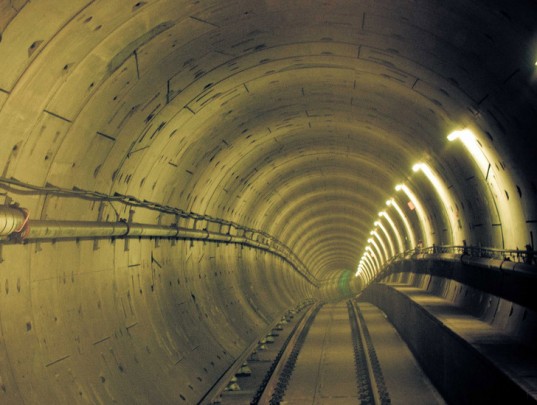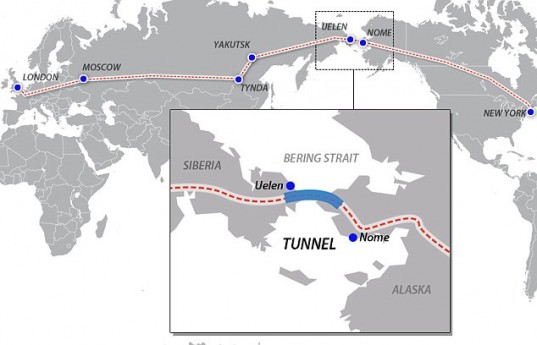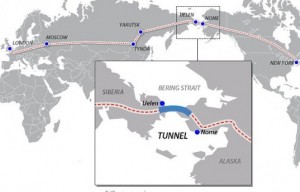In what could certainly be one of the boldest infrastructure developments ever announced, the Russian Government has given the go-ahead to build a transcontinental railway linking Siberia with North America. The massive undertaking would traverse the Bering Strait with the world’s longest tunnel – a project twice the length of the Chunnel between England and France. The $65 billion project aims to feed North America with raw goods from the Siberian interior and beyond, but it could also provide a key link to developing a robust renewable energy transmission corridor that feeds wind and tidal power across vast distances while linking a railway network across 3/4 of the Northern Hemisphere.

The idea is actually not very new — Tsar Nicholas II dreamed of the railway and tunnel in 1905. The on-again off-again scheme would provide a vital economic resource for both Asia and Americas by providing an efficient link of not only goods and passengers but also fiber optic cables and transmission lines. The key is a 65-mile-long tunnel that would pass underneath the Big Diomede and Little Diomede islands in the Bering Strait. The tunnel, at a projected cost of $10-12 billion, is to be built in three sections and would cross the International Date Line, reconnecting the two land masses.

The high speed railway and tunnel will be a private public partnership whose economic impact could be startling. 100 million tons of freight could be moved per year using the most efficient known way of transport. Proposed tidal energy plants could provide 10 gigawatts of energy and a string of wind power fields could churn a constant supply of clean energy, serving as a vital link to a worldwide energy grid. The tunnel alone would take fifteen years to complete — and an energy and railway network would take many more — but the project would significantly change the shipping and energy industry.
In a time of austere measures by governments throughout the world we hear less and less of large-scale projects, but the economic and environmental benefits of developing critical infrastructure links is a key element to 21st century environmentally sound economic growth.
Source: inhabitat

 Follow
Follow